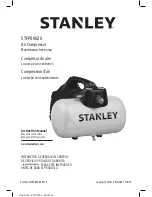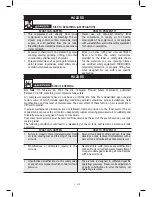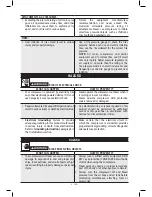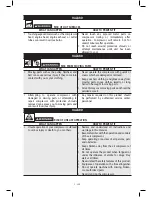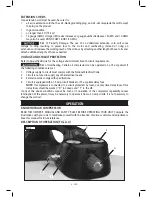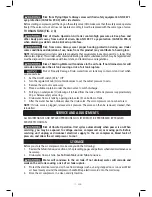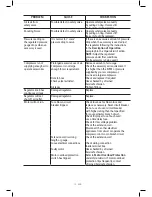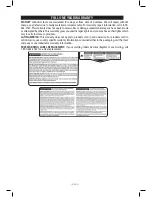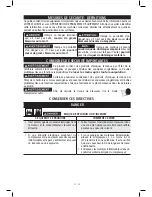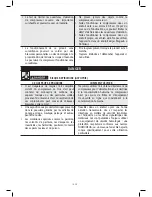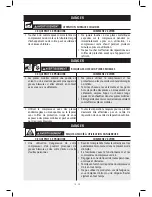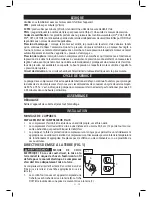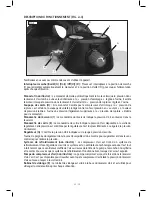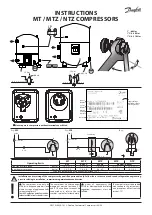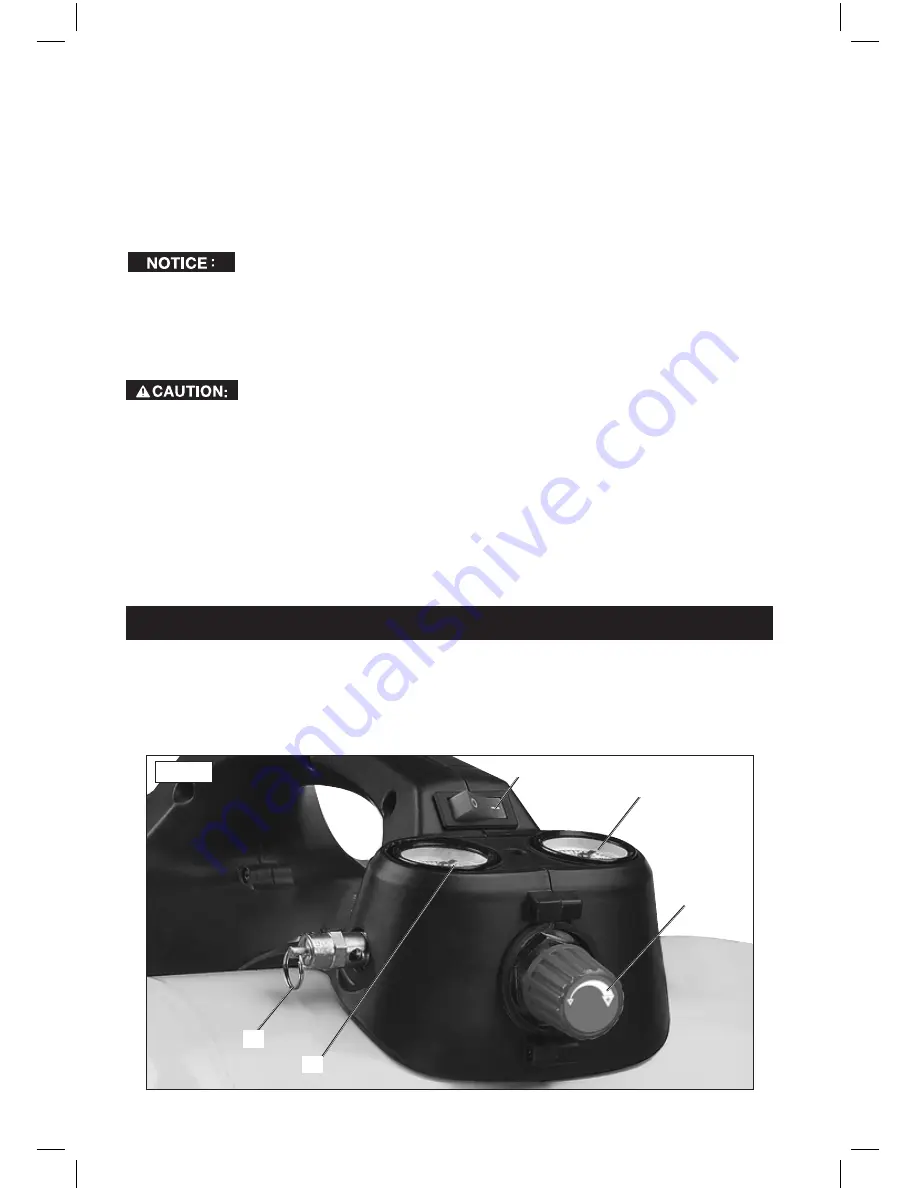
8 - ENG
EXTENSION CORDS
If an extension cord must be used, be sure it is:
•
a 3-wire extension cord that has a 3-blade grounding plug, and a 3-slot receptacle that will accept
the plug on the product
• in good condition
• no longer than 50' (15.2 m)
• 14 gauge (AWG) or larger. (Wire size increases as gauge number decreases. 12 AWG and 10 AWG
may also be used. DO NOT USE 16 OR 18 AWG.)
Risk of Property Damage. The use of an undersized extension cord will cause
voltage to drop resulting in power loss to the motor and overheating. Instead of using an
extension cord, increase the working reach of the air hose by attaching another length of hose to its end.
Attach additional lengths of hose as needed.
VOLTAGE AND CIRCUIT PROTECTION
Refer to
Specifications
for the voltage and minimum branch circuit requirements.
Risk of Overheating. Certain air compressors can be operated on a 15 amp circuit if
the following conditions are met.
1. Voltage supply to circuit must comply with the National Electrical Code.
2. Circuit is not used to supply any other electrical needs.
3. Extension cords comply with specifications.
4. Circuit is equipped with a 15 amp circuit breaker or 15 amp time delay fuse.
NOTE:
If compressor is connected to a circuit protected by fuses, use only time delay fuses. Time
delay fuses should be marked "D" in Canada and "T" in the US.
If any of the above conditions cannot be met, or if operation of the compressor repeatedly causes
interruption of the power, it may be necessary to operate it from a 20 amp circuit. It is not necessary to
change the cord set.
OPERATION
KNOW YOUR AIR COMPRESSOR
READ THIS OWNER’S MANUAL AND SAFETY RULES BEFORE OPERATING YOUR UNIT. Compare the
illustrations with your unit to familiarize yourself with the location of various controls and adjustments.
Save this manual for future reference.
DESCRIPTION OF OPERATION (FIG. 2–4)
FIG. 2
D
H
I
E
G
Summary of Contents for STFP00020
Page 43: ...43...

